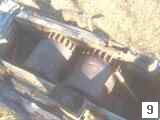|
Agrirama (Tifton, GA) The Agrirama is a state-operated historical site. The buildings are original and from the immediate area, or typical of those of the immediate area. Although they have plans to expand to Native American culture, the setting is now representative of South Georgia during the period 1870-1910. If you like old iron things, this is a MUST SEE. . . . just the steam-powered saw mill with a daily capacity of 10,000 board feet is worth the trip. Of course, you and I like cane mills, so that was the focus of my trip. They have two areas set up-one near the pavilion (where syrup is made several times each year), and a second one, which was not in use when I visited. Both of these sites are shown here. The people at the Agrirama are real and really nice.
They have lived the life they explain, and they are eager to interest others.
One of the syrup makers, Bill Carter, even offered to give me some hands-on
experience. Visit the website (http://www.agrirama.com/) of this magnificent park. Slides 2 and 3 are close-ups of the Chattanooga No.13 rollers. Note that the spacing between the first small roller and the king roller is more than 1/8 inch, whereas the spacing between the second small roller and the king roller is nil. An inscription on the mill specified that the butt end of the cane must be fed first (to ensure that the mill is not stressed by coincidental simultaneous passage of several butts). Notice, also, that the king roller (as on Golden mills) has rims at the top and the bottom, between which the smaller rollers run. This was advertised as a precaution against the cane running off the rollers and jamming the gears. Opinions seem to vary a good bit about how much juice should be extracted from the cane, which is about 85% juice. My readings indicate that power mills are much more efficient and some extract nearly all the juice, leaving the bagasse very dry. Obviously, the more juice extracted, the greater quantity of syrup from a stand of cane, and some authors stress this economy, disregarding all else (e.g., Yoder, USDA Farmers' Bulletin 1034, 1925). Horse mills properly set are said to extract about 50-60% of the cane's weight. It is said that extracting a greater percentage will result in an extract containing more starch (especially with sorghum), waxes and other impurities and result in a poorer quality of syrup. Dale and Hudson (USDA, Bureau of Chemistry, Bulletin 921, 1920) say outright: ". . .it is generally believed that it is impossible to make a high-grade sirup by the ordinary [means of skimming] when very high extraction is obtained." Something for everyone! Slide 4 shows the 60-gallon kettle, which was made
Slides 6 and 7 are of a mill made by Quitman (GA) Manufacturing. That example raises to at least three the number of brands of mills made in Quitman, Georgia. Quitman, which had a population of 2281 souls when the 20th Century rolled in, has only doubled in population at present (5034), compared with a six-fold increase in population in nearby Valdosta. Interestingly, Wiley (USDA, Div. Chemistry, Bulletin 70) tells us that Quitman was the center of syrup production from sugar cane in 1902. [Thanks to Reference Librarian Bill Modrow for the population figures.] As an incidental point, I was struck by Wiley's narrative concerning E. A. Van Landingham's primitive syrup "factory" near Cairo, GA. This outfit employed a one-mule mill and a cast iron kettle. Thus, Wiley noted, "It must be admitted that some of the best sirup which has been brought to our attention has been manufactured in the simple way illustrated [by Van Landingham]. Of course, the quantities that can be made in a single kettle are limited, and there can be but little commercial importance attached to goods manufactured in this way. For the supply of the farmer himself and his neighbors, however, it is more than likely that this method of manufacture will continue to exist for a long while, and, in fact, there seems to be no necessity or desire that it should ever entirely pass away." Wiley's prophetic statement, therefore, encourages us that bigger is not necessarily better. Wiley probably did not think about it, but the Van Landinghams have good genes, and intelligence probably had something to do with that good syrup, too. Interestingly, Wiley's visit more than a century ago is part of the Van Landingham family history. (Thanks to Cody Van Landingham for sharing a photograph and other information.).
Slides 9 and 10 show an unknown 2-roller mill. Although such mills are uncommon in South Georgia, some syrup makers opted to buy the mill without the frame. I believe that the frameless mills that I have seen are typically older than the framed mills. Slides 11 and 12 are close-ups of the mountings for the top shaft of the roller (held firmly by a leaf-type spring) and for the bottom shaft, which appears to sit in a typical bearing box that was placed in a well carved into the wood.
|
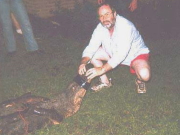
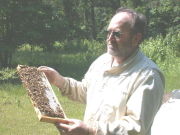
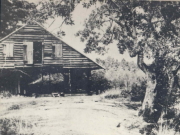
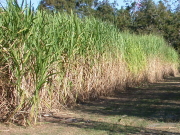
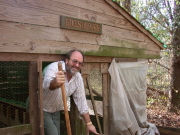
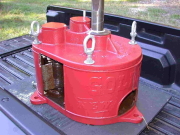
 Slide 1
Slide 1

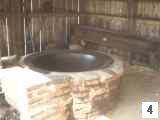
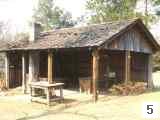 Slide 5
Slide 5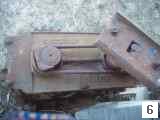
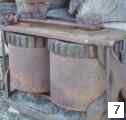
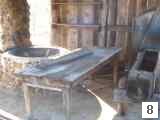 Slide 8
Slide 8